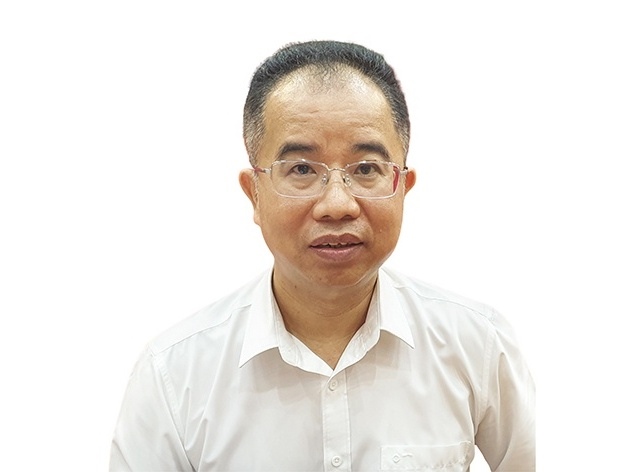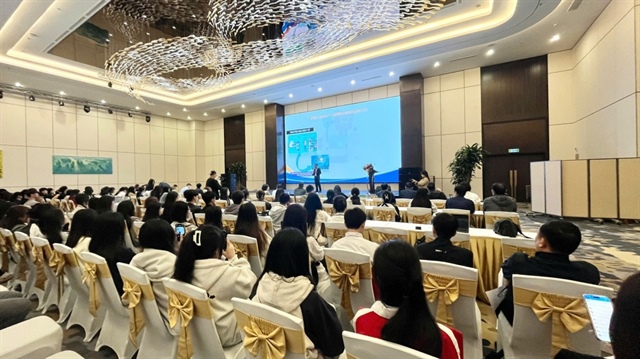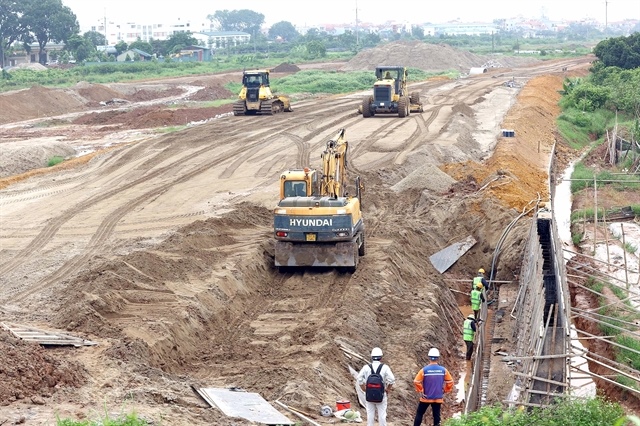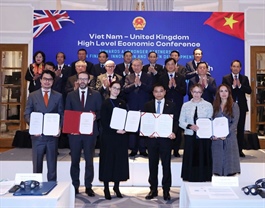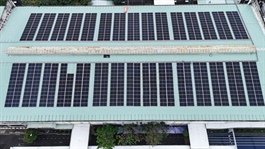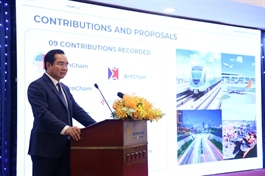Making the two-tier government model work from the ground up
Making the two-tier government model work from the ground up
After four months of implementation, the model has produced certain and promising positive outcomes, but it has also revealed critical gaps that must be addressed to ensure the reform works in practice.

Võ Trí Thành |
Over the past two years, Việt Nam has launched major resolutions to drive the nation into a new era – from economic restructuring and private sector development to technology, innovation and administrative reform. But their success depends not only on policies or laws, it rests on the people who carry them out – their competence, adaptability and accountability across all levels of government.
This truth is now being tested through one of Việt Nam’s most far-reaching administrative reforms – the establishment of a two-tier local government system. By removing the district level and connecting provincial authorities directly with communes and people, the reform aims to streamline bureaucracy, reduce cost and deliver faster, more responsive public services.
After four months of implementation, the model has produced certain and promising positive outcomes but it has also revealed critical gaps that must be addressed to ensure the reform works in practice.
The removal of the district layer has reduced overlapping functions, improved coordination between provinces and communes and saved administrative expenses. Decision-making has become faster, helping earn strong public support, with officials and citizens expressing confidence in the reform. These gains show that the reform is moving in the right direction.
However, behind these achievements remain notable challenges. The transition has revealed gaps in both capacity and coordination that could slow down progress if left unaddressed.
One of the biggest challenges is the lack of capacity at the grassroots. Many commune governments remain underprepared to take on the new responsibilities. They face shortages of trained personnel, insufficient infrastructure and outdated administrative procedures.
Commune officials now manage a broad range of functions – from land management and public investment to education, social affairs and environmental protection – but many have not been properly trained for these new roles.
Administrative procedures, especially in land and tax management, remain unclear and inconsistent. Some areas have too many staff while others, especially in mountainous, border and island regions, lack qualified personnel. The imbalance leaves many communes overworked and unable to meet growing demands.
Infrastructure is another obstacle. Many communes operate in small, scattered offices with limited technology and outdated equipment. In remote areas, internet connections are weak, making digital administration difficult. The national data systems are not yet fully integrated, particularly in areas such as civil registration and land management, which hinders service delivery and reduces transparency.
Income and working conditions for commune staff are also concerns. Their workload has grown, but salaries and allowances remain unchanged. Many officers in rural and remote areas face long commutes and heavy pressure, leading to low morale and difficulty in retaining qualified personnel.
Institutional gaps also persist. Some powers have not been clearly defined between provincial and commune levels, leading to confusion or delays in handling cases. The absence of a district level has created a coordination gap, especially in areas such as infrastructure planning and social services that affect multiple communes simultaneously.
These challenges demonstrate that reform is never just about eliminating layers of bureaucracy, but about rebuilding institutions to accommodate new realities. Every reform must move in parallel with institutional change, guided by the principles of transparency, accountability, participation and determination. Yet during this transition period, even with strong efforts, progress will take both time and capacity.

Võ Trí Thành |
Practical, people-focused approach
In a world marked by uncertainty and rapid change, Việt Nam cannot wait for a perfect institutional framework before acting. Reform must move forward step by step, learning and adjusting along the way. For now, attention should focus on addressing several pressing issues.
The priority is to strengthen training. Commune officials require short, intensive courses to rapidly enhance their skills in document handling, digital processing, and decision-making. Provinces should send experienced officers to provide direct guidance while hotlines, online manuals and virtual assistants can help answer questions in real time.
Administrative procedures must be clarified and simplified. The Government should issue clear electronic workflows on the National Public Service Portal and allow deputy heads of commune service centres to sign and certify documents. This will make the four-on-the-spot model – receiving, reviewing, approving and returning results – more effective.
For remote and mountainous areas, mobile government units should be deployed, supported by special allowances and better telecommunications infrastructure to make public services more accessible to local people.
Human resources need to be adjusted. Each commune should have an additional vice chairperson focusing on economic affairs and digital transformation, along with two or three more technical officers.
Staff allocation should depend on population, area and economic conditions, not rigid quotas. To boost morale, a temporary 100 per cent salary increase for one year could help alongside performance evaluations linked to measurable indicators and citizen satisfaction.
Lawmakers have also proposed raising the basic salary from May 1, 2026, to boost morale among grassroots officials. Special policies are needed to attract, train and retain capable staff in disadvantaged and remote areas.
Digital transformation must be accelerated. The Government should invest in broadband connections, modern equipment, and shared databases that connect provinces and communes. Each locality needs a full one-stop digital service portal, while core communes can support smaller ones nearby.
In areas with greater capacity, paperless communes could be piloted using electronic records, artificial intelligence (AI), and national digital ID integration to enhance transparency and efficiency.
On organisation and institutions, the Government should soon issue or revise regulations to make decentralisation and delegation clearer. A transparent performance-based system should be developed to assess and filter public servants. More importantly, the reform must shift from administrative management to public governance, where local leaders act as chief architects of their institutions rather than just implementers.
Finally, strong leadership is now more important than ever. Those chosen to manage and lead must combine professional competence with integrity and dedication. They need absolute authority to act, to make bold, responsible decisions that drive change and deliver results.
The two-tier government reform is a major step toward a more efficient and people-centred State. Its early progress is encouraging but lasting success will depend on closing the gaps between policy and practice. Strengthening human capacity, simplifying administration, investing in technology and ensuring flexible institutions will allow the reform to truly serve its purpose — bringing government closer to the people.
*Võ Trí Thành is former vice-president of the Central Institute for Economic Management (CIEM) and a member of the National Financial and Monetary Policy Advisory Council. With a doctorate in economics from the Australian National University, he focuses on macroeconomic policy, trade liberalisation and institutional reform. He authors the Việt Nam News column Analyst’s Pick.
- 07:02 04/11/2025


